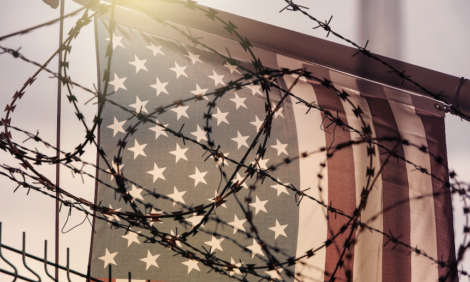



Aussie Exporters Ride Out 2016 Challenges; Optimistic About 2017
AUSTRALIA - Australian livestock exporters are quietly optimistic about the coming 12 months, after seeing out a number of challenges for the trade in 2016.Australian Livestock Exporters’ Council chief executive officer Simon Westaway paid tribute to exporters for overcoming market hurdles across a number of supply chains over the course of the year. The comments coincide with the publication of Meat & Livestock Australia’s latest edition of its LiveLink market update.
Looking ahead, Mr Westaway (pictured) said market consolidation and diversification would continue to be a high priority for livestock exporters in 2017, further strengthening business-to-business partnerships and working alongside government-to-government collaborations.
“With new supply chains for feeder-slaughter cattle in China gaining Exporter Supply Chain Assurance System (ESCAS) approval, we’re hopeful of that highly anticipated trade commencing in the near future, which is set to add significant value to our industry and provide extra marketing options for cattle producers,” he said.
“We’re very much focused on opportunities for the live sheep trade too, especially the prospect of re-opening the market in Saudi Arabia. ALEC continues to work with the Federal Government and in collaboration with the Sheepmeat Council of Australia to pursue this important trade opportunity.
“We believe our existing Memorandum of Understanding with Saudi Arabia, or a slightly reformed version thereof, provides the best foundation on which these high priority efforts to re-open the market can be based. This also means that ESCAS will not be altered in any way.”
Mr Westaway flagged items on the industry’s animal welfare agenda, including participation in a government-led review of the Australian Standards for the Export of Livestock (ASEL) and ongoing dialogue with Australian Government Accredited Veterinarians (AAVs).
“These initiatives complement our industry’s ongoing investment in research, training and infrastructure in-market, highlighting our commitment to reducing animal welfare risks in overseas supply chains,” he said.
December’s LiveLink confirmed total feeder and slaughter cattle exports are set to finish the 2016 calendar year below one million head, with 917,000 cattle exported up to the end of November across all markets.
Feeder and slaughter cattle exports to all markets increased again in November with 88,346 head shipped. A total of 67,000 head was shipped to Australia’s biggest market, Indonesia, for the month as the trade recovered from recent market disruptions.
With a further 20,000 cattle expected to be shipped to Indonesia for December, the total Indonesia export figure for 2016 is on track to finish at 555,000 – a 10 per cent decline on 2015.
“High cattle prices have been a very welcome outcome for our partners in the production sector, but it has also impacted profitability in the supply chain and seriously compromised the affordability of Australian beef for consumers in countries like Indonesia,” Mr Westaway said.
MLA reported that in wet markets around Jakarta, frozen Indian buffalo meat is selling at a significant but widely variable discount, at IDR 65,000-110,000/kg, while fresh beef has been stable, at IDR 100,000-120,000/kg.
Close to 4000 breeders were shipped to Indonesia in November, with recent shipments including the first consignment of breeding cattle as part of the Indonesia-Australia Commercial Cattle Breeding Program. The program will ultimately deliver a total of 2000 breeding heifers and 100 bulls from Australia, as part of the Indonesia-Australia Partnership on Food Security in the Red Meat and Cattle Sector.
Mr Westaway said it was in the interests of both countries to continue work to develop a more competitive, efficient and sustainable Australia-Indonesia red meat and cattle relation as part of a globally competitive commercial supply chain.
“The trade with Indonesia is underpinned in the long-term by our shared objectives around ongoing economic development and working cooperatively to build Indonesia’s beef and cattle capacity,” he said.
“It is a critical partnership built on long-term collaboration and strategic alignment, and the ongoing dialogue around the trade shows the relationship is well placed to navigate changes in market and policy settings.
“ALEC chairman Simon Crean has played a leading role in trade dialogue in recent weeks, which has galvanised our belief that the live trade to Indonesia has an economically sustainable and mutually beneficial future. With this in mind, Australian exporters are building even stronger business-to-business partnerships with stakeholders in the Indonesia.”
Mr Westaway said animal welfare challenges in markets like Vietnam in the past 12 months had put the accountability in the live trade’s supply chain on show to all stakeholders. He said exporters welcomed the release this week of the Department of Agriculture & Water Resources (DAWR) regulatory performance report, which reflected the strong commitment in improved animal welfare shared between exporters and DAWR, following evidence of cruel treatment of Australian cattle in Vietnam earlier this year. (Full statement here.)
“Our industry is committed to a transparent and accountable live trade within the regulatory framework of ESCAS, which is helping to uphold the world’s best welfare, control and traceability standards,” he said.
MLA’s trade figures show that 203,967 cattle were exported to Vietnam in the 12 months up to November, representing a 40 per cent reduction on the previous 12-month period. However, a total of 41,327 head were exported from September to November, representing almost half of all feeder/slaughter cattle traded across the spring quarter.
TheCattleSite News Desk


